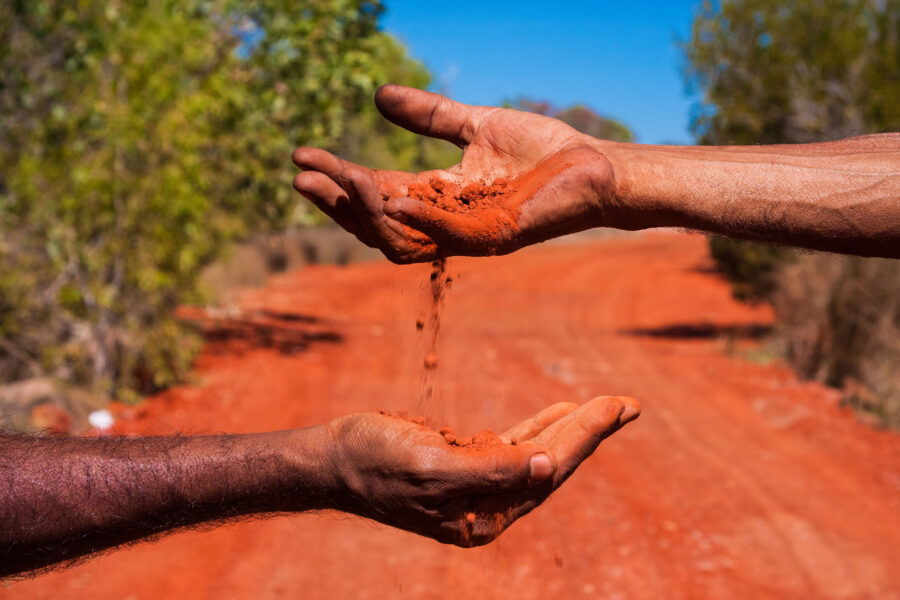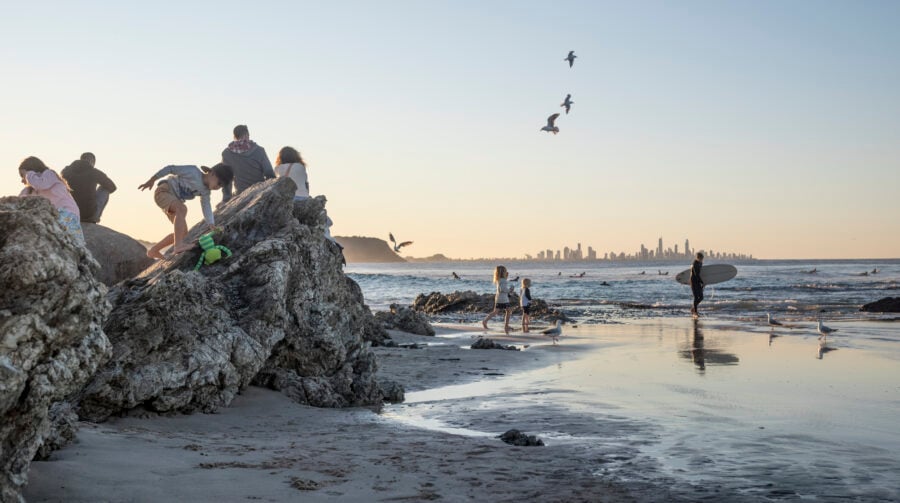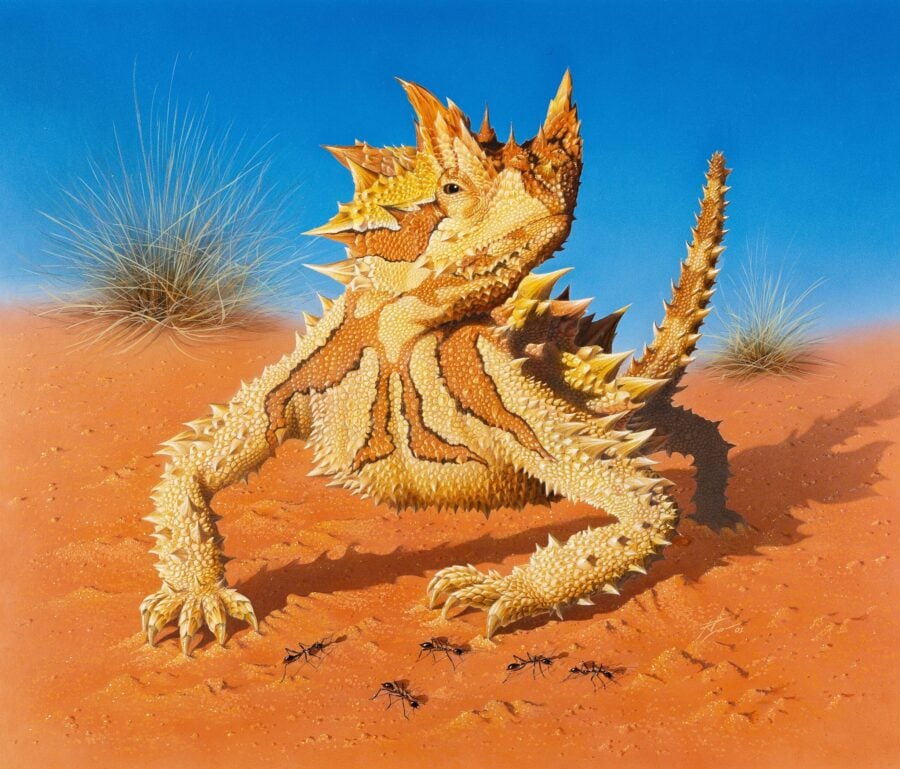Speaking up

In the dry bed of the Northern Territory’s Hanson River, words dance from Clarrie Kemarr Long’s fingertips. Her hand signs and facial expressions are as captivating as the hypnotic song she leads while sitting cross-legged in the shade of river red gums. She is accompanied by other senior Aboriginals – Eileen Pwerrerl Campbell and Molly Pwerrerl Presley – and younger women, all of whom speak both the Anmatyerre and Warlpiri languages. To the steady beat of clapping hands, they sing about an ancestral barn owl that turns into a monster and frightens a family group of hunters.
Clarrie has spent the morning burning ironwood twigs, for ash to mix with chewing tobacco, and eating kangaroo tail cooked on an open fire – but she truly comes alive in this singing and storytelling. Her appreciative audience includes linguists who are recording with the support of Eileen’s daughter, April Pengart Campbell. She teaches and coordinates the language and culture program at nearby Ti Tree School, 180km north of Alice Springs.
April is one of a team using technology to document ancient stories told through song, sand drawings, sign language and speech. She will include the song recorded today – for a place called Angenty – in a book. “So the kids can watch and learn about their country,” she tells me. “So they can remember.”

The team is also filming conversations in the local sign language, for inclusion in an online dictionary. One of the linguists, Dr Jenny Green, is a research fellow at Melbourne University and has spent decades tuning in to the voices of Central Australia, working with Anmatyerre and Alyawarr language specialists to compile dictionaries. The latest projects, in collaboration with the Batchelor Institute of Indigenous Tertiary Education (BIITE), have opened up a “whole new dimension” by exploring the role that sign language and sand drawing play in communication.
“Speech, sign, song and sand drawing often work together in storytelling practices and in everyday interactions,” Jenny says. “We are working together and exploring new ways that communities can record and use this material.”
The women’s song concludes with the family fleeing the owl in such haste that seed spills from their coolamons and eventually grow into ghost gums alongside a riverbed in Angenty country. Through their language, the women reaffirm connections with their land and share knowledge acquired over a lifetime.
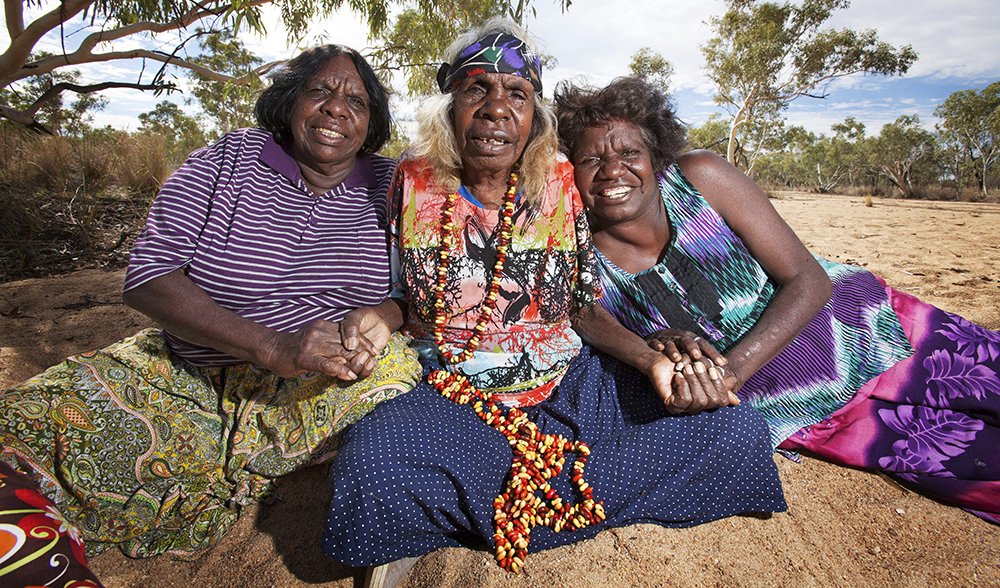
At least 250 distinct languages were spoken by Aboriginal and Torres Strait Islander people at the time of European colonisation. A tribe was commonly named for the language its people spoke; the language bestowed by creator beings in an ancient time.
Kakadu people speak of the Great Mother Imberombera, who sent out her spirit children to different parts of the country and told them which tjikaru (language) to speak. In north-western Arnhem Land, the Iwaidja people recall Warramurrungunji emerging from Arafura Sea to assign her children land and languages. Many Aboriginal people believe that speaking the language of their country honours their ancestors, as well as the customs and traditions of their people.
“Without my language, who am I?” asks Veronica Perrurle Dobson, an Alice Springs-based educator, author and Arrernte senior. She cannot stroll through Alice Springs Desert Park without pausing to crush the leaves of arrwe-atnulke (striped mint bush) and explain its medicinal properties or point out a pair of arlpatye (ringneck parrots).
“We are people of the land and our language expresses this. Our knowledge is held in our languages and our languages express our cultures. Language and culture are our identities. Keeping our languages strong helps to keep us strong,” says Veronica in a video she produced for the Desert Knowledge Cooperative Research Centre.
But indigenous languages began changing the moment they came into contact with English. As linguists, anthropologists, ethnographers, surveyors, settlers and missionaries began compiling written vocabularies, our first peoples were borrowing words from the newcomers.
Other exchanges were far more deadly, as massacres and diseases introduced by whitefellas killed countless thousands. The Mindiri massacre alone – near Birdsville in the mid-1880s – silenced about 100 people, including most speakers of the Wadikali, Pirlardapa, Yaluyandi and Malyangapa languages. Subsequent government policies that deprived others of their land and their children, and discouraged “that yabber-yabber talk”, further suppressed traditional languages and hastened their decline in all but the most remote corners of the Kimberley, Arnhem Land and Central Australia.
South Australian financier and politician Anthony Forster typified the prevailing attitude of the time in 1843. He believed the natives would be sooner civilised if their language was extinct and he proposed that the children taught English would afterwards mix only with whites. He thought the use of their language would preserve prejudices and debasement, that it was not sufficient to express the ideas of civilised life.
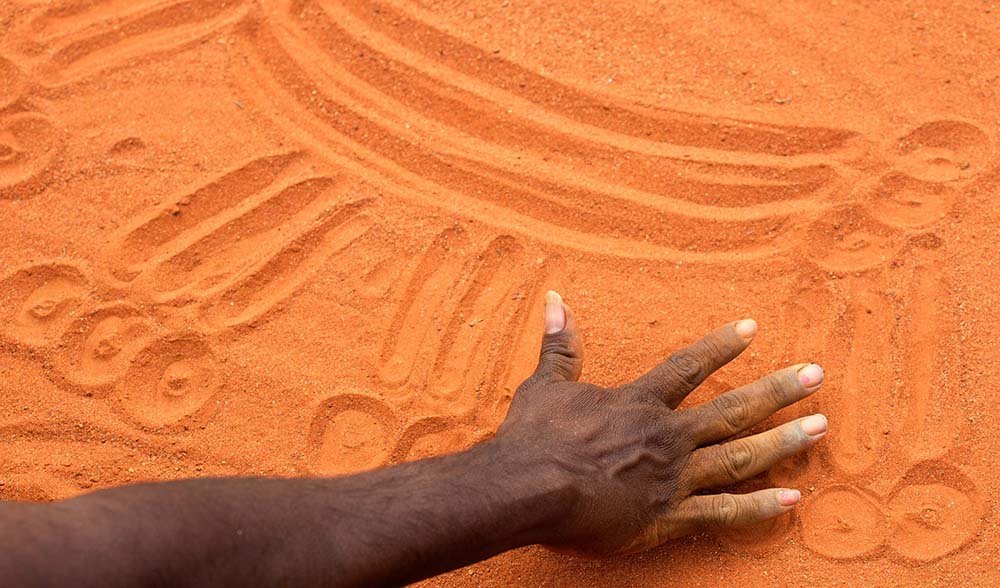
Nuns forbade Veronica from speaking Arrernte when she entered Arltunga Catholic Mission School at the age of five, but she “kept it dearly” in her heart. She worries that today’s “hip-hop mob” is not sitting down enough with their old people for languages to be passed on. “Language, for us, has a deep purpose,” she says. “It communicates where we belong, who we know and how we relate. I want to keep it strong for my grandchildren and great-grandchildren.”
Exposure to modern media and the pervasiveness of English has promoted the development of contact languages – such as Warlpiri Light, Torres Strait Yumplatok, Aboriginal English and Kriol. This poses considerable challenges for educators, including Cath Greene, the principal of Ntaria (Hermannsburg) School, about 100km west of Alice Springs.
“The community wants us to teach English, which they see as the language of power,” she says. “They want their children to be able to speak both ways but we have to do what we can to preserve and promote traditional languages. Our singing program helps. It’s pure Western Arrernte [spelt locally as Western Arrarnta] and the children have to read and sing their language, which is a fun way to learn.”
According to the National Indigenous Languages Survey (2005), only about 145 of the original indigenous languages are still actively spoken. Most (about 110) are considered severely or critically endangered – spoken only by small groups of people, most of them over 40 years of age. Only 18 languages are deemed “strong” (spoken by all generations of people in a language group). Indeed, Australia is losing languages faster than any other country.
But there is light on the horizon. A network of indigenous language centres is growing. Many communities are dusting off old recordings, word lists and grammars to produce fresh resources for teaching long-forgotten phrases to a new generation. Initiatives, such as the sign language project centred on Ti Tree, aim to reclaim, revitalise and reinforce the rich diversity of traditional expression.
“When I started talking and remembering again, it was like turning back the hands of time. Once you learn a language, it stays with you always.” Gladys Miller, Scotdesco elder
At Menindee Central School, in western NSW, students exchange Paakantji, Mandarin and Italian via video-link with Sydney students. On Croker Island, 220km north-east of Darwin, talking books and mobile phone apps are translating English back into local languages; while at Hervey Bay, Queensland, young people are composing dance songs in their own tongue. And the Yan-nhaŋu Language Team of the Crocodile Islands, off the north coast of Arnhem Land, has launched an ecological knowledge database to support its resident rangers.
Margaret Carew, project manager of the Arandic Endangered Languages Project run by BIITE, believes that community partnerships are the key to preserving languages. “It is important to respect the intellectual rights of communities to their language material and to engage the cultural and language [custodians] – the fluent speakers – as project leaders,” says Margaret, who has spent 20 years working in Arnhem Land and Central Australia.
“At the same time, we [shouldn’t] over-romanticise traditional languages. We need to support language diversity and help to produce resources that are relevant, whether that be dictionaries, films or audio books. Change is particularly dynamic in multilingual communities.”
Ntaria linguist and choir leader David Roenn- feldt has observed other trends while walking in the footsteps of German missionaries and language luminaries Wilhelm Schwarz, Hermann Kempe and Carl Strehlow. David believes the establishment of the Lutheran mission at Finke River in 1877 served Western Arrernte people well “by protecting and providing for them so their languages could survive”.
His guidance of the heavenly Ntaria Ladies Choir and the less travelled school choristers, who all sing in Arrernte, has convinced him of the merits of bilingual education, which the NT government controversially abandoned after the 2007 federal government intervention.
“Children living in town are not in the physical context to learn their languages properly,” David says. “When they learn in their mother tongue, out on country, they gain a complete world view, with all its accompanying thought processes, which is a solid foundation for then learning English. It’s very noticeable, even with the women – they sing more confidently and louder in their own language.”
The Christian Scriptures have long been used for teaching and safeguarding indigenous languages and the Australian Society for Indigenous Languages (AuSIL) continues the tradition of translating bibles into Aboriginal languages. The faith-based organisation’s Alice Springs outlet also sells Warlpiri gospel books, recordings, colouring and songbooks, even the movie, Jijaji-kirli Yimi (The Jesus Story According to Luke). Its team of linguists, including David Blackman, immerse themselves in bush communities for years, working with local language experts to painstakingly translate passages of the gospels.
The partnerships often produce other community language resources. “Very little English was spoken in indigenous communities when I first started visiting them in the 1980s,” says David, who later worked in Epenarra, about 150km south-east of Tennant Creek, for 12 years.
“In some communities, people now speak a mix of languages. Children, especially, develop a lingo that combines their traditional language, Kriol and Aboriginal English. Many indigenous communities are battling to maintain their languages, all of which are under threat to some degree. We hope that our products accord indigenous languages the dignity and respect they deserve, and that they help people to strengthen and rediscover their languages.”
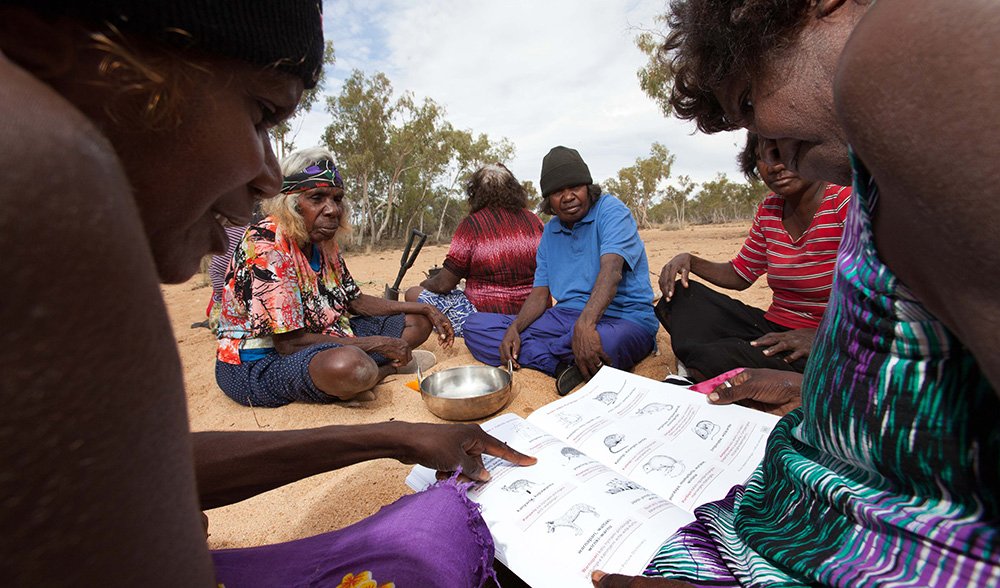
The perilous state of our indigenous languages is graphically illustrated by Gladys Miller. A dignified elder of the Scotdesco (Tjilkaba) community, at Bookabie, South Australia, she has a mind like a steel trap but the body of a frail bird. The 79-year-old spoke only her mother’s language (Wirangu) for her first decade, before switching to the stronger Kokatha tongue of the western SA desert. She is now thought to be the only surviving fluent Wirangu speaker and that language’s resurrection rests on her narrow shoulders.
“I forgot it for a while,” says Gladys, who requires 24-hour oxygen and is largely confined to her home, which blooms with artificial flowers and familyphotos. “But when I started talking and remembering again, it was like turning back the hands of time. Once you learn a language, it stays with you always, but Gubi and Estelle want to hurry up.”
Gubi is Leonard Miller, Gladys’s grandson, and Estelle, her daughter. This enterprising duo head the Far West Languages Centre, based east of Scotdesco at Ceduna, and are working to retain or revive the Wirangu, Kokatha and highly endangered Mirning languages. Since a series of workshops run by the Research Network for Linguistic Diversity (RNLD), they have begun documenting the languages and learning how to teach them under a master-apprentice program.
As well as developing a curriculum for local schools, Estelle and Leonard are hoping to organise classes in peoples’ homes. “Our time with Gladys is so precious and privileged,” Leonard says. “This is a member of our family that is giving our language back to us, and that makes it very special. Our land speaks through our languages, but to breathe life back into them is going to take a community effort.”
Estelle says she feels a great sense of urgency: “We don’t know how much time we have with Mum, and we would like to see Wirangu spoken by families on its country again.” It’s an enduring family passion. Gladys’s grandmother, Lucy Washington (Minjia), helped anthropologist, welfare worker, researcher and “honorary protector of Aborigines” Daisy Bates record Wirangu myths and about 500 words in the early 1900s. Gladys assisted linguist Luise Hercus in using that archival material to draft a Wirangu dictionary and more recently compiled a picture dictionary and children’s book about hunting wombats. She taught TAFE students for a time but is now restricted to one-on-one instruction with apprentices including her daughter Reva Miller, granddaughter Tamara Wolford and fellow Wirangu woman Jackie Brown. “You should never be ashamed to speak your language,” she tells them.
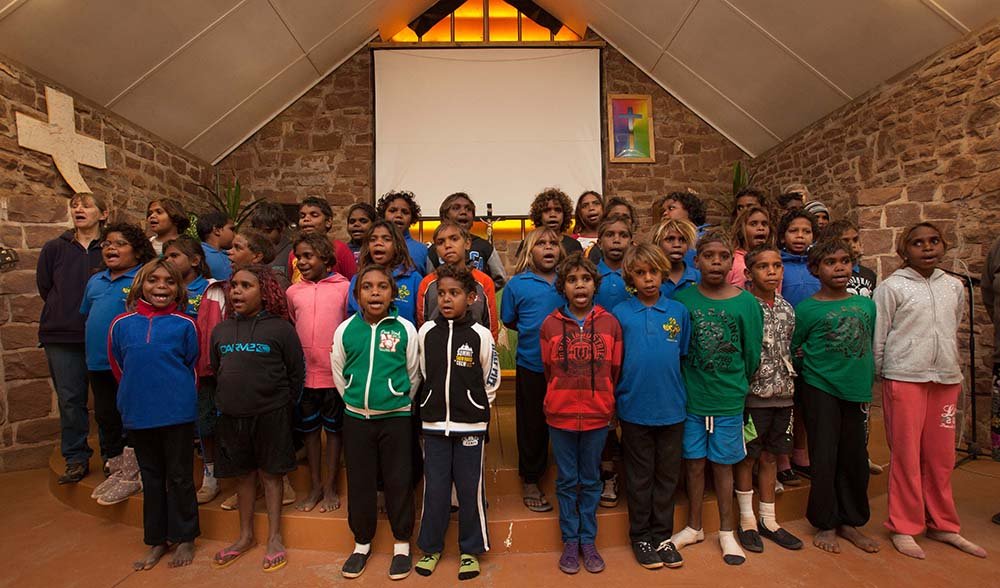
Fifty-one-year-old Anthony Henry had all but given up hope of ever speaking his mother’s tongue until last year. Growing up in central Queensland’s Woorabinda, 140km south-west of Rockhampton, he rarely heard anyone speak his language, which is based in the Bowen-Mackay area. Anthony’s parents were made to speak English, as were hundreds of others from Queensland, NSW and the NT who were forcibly moved to Taroom mission and then Woorabinda reserve.
But many of the 1000 or so residents of Woorabinda – the traditional home of the Wadja and Gangulu people – did not lose their linguistic heritage completely. In fact, Woorabinda’s people identify with an astounding 52 language groups.
Last year, community elders approached the RNLD for support to highlight this diversity and help people begin hunting down material about their languages. Co-founder and senior linguist Margaret Florey says Woorabinda people were passionately committed to finding out about their languages, even though “very few people knew about their heritage or language, even where they came from”.
The RNLD has since run six workshops to give community members the skills and confidence to interpret linguistic materials and to develop teaching methods. The network has also introduced them to veteran linguist Gavan Breen, who made recordings of Bidjara, Gungabula and Gangulu speakers in the 1960s and ’70s – recordings that he repatriated from his Alice Springs base late last year.
“It was very emotional,” Anthony says of the smoking ceremony to welcome the material home. “It was amazing for people to again hear the languages that their fathers and grandfathers had spoken. It was like Gavan had brought the lost voices back.”
Travelling for months at a time, Gavan would visit western Queensland towns and bush camps to record words from old people who often hadn’t spoken their language for decades. He’d write up grammars and vocabularies when he returned to Melbourne.
“I commonly met 80-year-olds who were the last speakers of their language,” Gavan says. “I salvaged what I could. I had no prospect of maintaining many of the 20 or so languages I studied, mostly from Queensland; I was simply documenting them. Many of the younger people expressed sorrow that they hadn’t learnt the language sooner.”
But all is not lost. Woorabinda Knowledge Centre – a partnership between Woorabinda State School and Woorabinda Aboriginal Shire Council – has given Gavan’s recordings a safe home. It’s conducting research across a suite of languages and some elders are teaching them within the community – including Gungabula and Wadja at the primary school and Bidjara and Gungabula at the local childcare centre.
“The children are eating it up,” Anthony says. “There are many people like me, whose language and culture was virtually taken away. I grew up not understanding my status as an Aboriginal, with this need to make myself whole again. In the process of losing our language, we have been lost as people. But I have now found speakers of my mother’s tongue [Barada] and I am using words salvaged by linguists many years ago. It’s very powerful.”
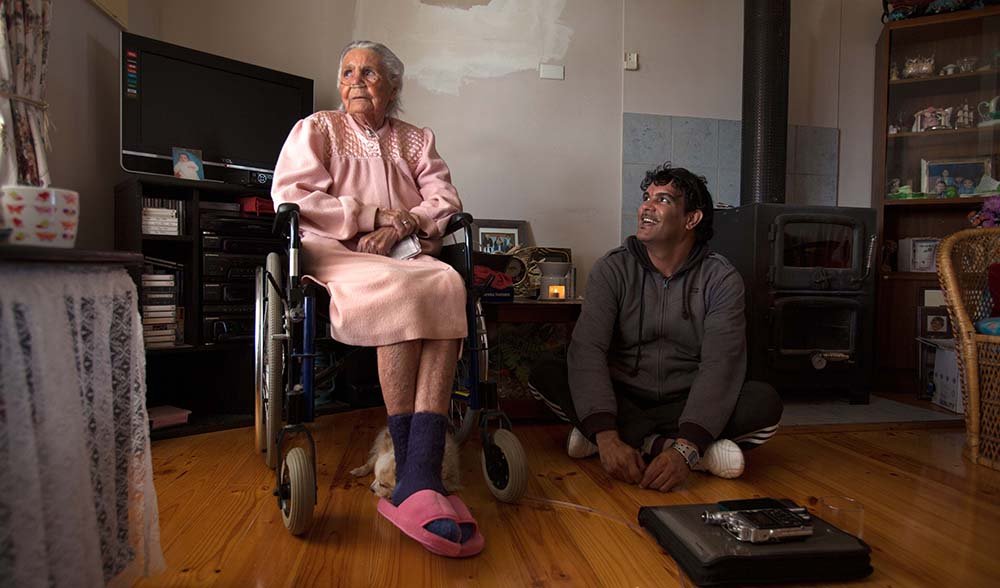
Many First Nations people regard the languages they have lost as “sleeping”. However, the process of reawakening them can be both a practical and political nightmare. The languages that are successfully revived will undoubtedly differ from those that the first Europeans documented.
“Language changes and assumes modern forms; it’s a natural process,” says Jeanie Bell, a proud Aboriginal community linguist who has advised on indigenous language teaching nationally. “It would be wonderful to see people writing stories and giving speeches in their language, but we can’t expect languages to remain the same as they were 100 years ago. The priority is to support people whose languages are still being spoken.”
Jeanie believes that while the retention and revival of languages is critical to the health and wellbeing of indigenous people, it will benefit all Australians. As a storehouse of knowledge about our continent, its history and ecology, these languages are already informing land and resource management and opening up social and economic opportunities.
“Language loss is just as devastating to indigenous people as the loss of their land,” Jeanie says. “A better awareness of Australia’s linguistic diversity is critical to healing and reconciliation for both indigenous and non-indigenous people.”
Anthony Henry agrees. “We indigenous Australians need to come to know who we are,” he says. “To do that, we have to restore our languages.”
The Ti Tree women have a strong sense of who they are and how they belong. Their songs, signs and language are rich cultural repositories and unmistakably of their country. Their words and stories also possess a beauty and musicality that transcend space and time – something linguist T.G.H. Strehlow recognised in all indigenous languages.
“Above all, let us permit native children to keep their own languages,” he wrote in Dark and White Australians (1957). “Those beautiful and expressive tongues, rich in true Australian imagery, charged with poetry and with love for all that is great, ancient and eternal in the continent.”
Australian Geographic thanks April Pengart Campbell, Jenny Green, Margaret Carew, Margaret Florey, Veronica Perrurle Dobson, David Roennfeldt, Leonard Miller, Estelle Miller and Paola Ciarla for their assistance with this story.
